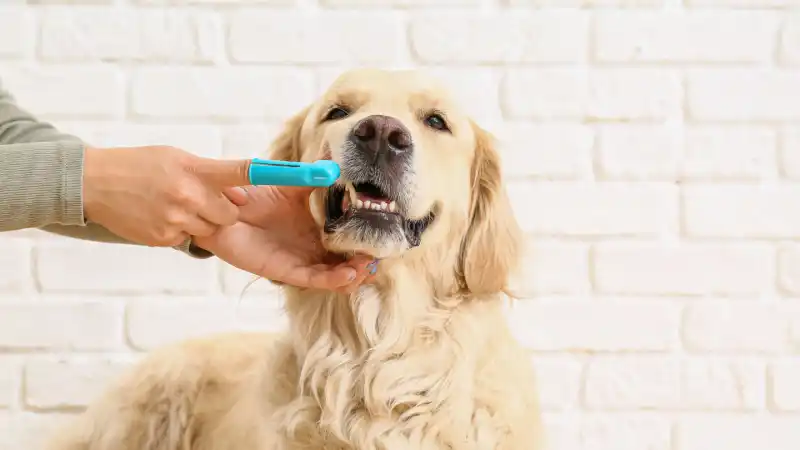Preventing a Visit to the Emergency Vet Clinic
It's impossible to monitor our dogs 24/7. They get into the trash and play with things they shouldn't! Here are the most common ER visits and how to avoid them.

It’s the middle of the night and your dog has woken you up with the sounds of vomiting. He’s made a mess all over the house and something is clearly wrong. Your veterinarian closed four hours ago and now you must make the choice to head to the nearest emergency vet hospital or wait it out until morning. The answer is obvious, and you quickly leash your dog and head out the front door.
This scenario isn’t uncommon - innumerable medical reasons force owners to the emergency clinic. There are a handful of incidents that emergency clinics report seeing consistently, and many of them can be easily prevented. By learning about the most common accidents, you can avoid being the next unfortunate pet owner rushing through the clinic’s door.
Pet Poisoning
One of the top reasons dogs end up at the emergency clinic is poisoning by something they have ingested. Many foods that people find enjoyable, such as chocolate, can be deadly when consumed by pets. Popular indoor plants like poinsettias and succulents are pretty to look at, but can cause vomiting, cardiac irregularities and a myriad of other dangerous symptoms when eaten by your dog. Human medications will damage the gastrointestinal tract in your dog, and something as simple as an asthma inhaler can cause seizures and death. Preventing accidental pet poisoning is the best way to ensure you won’t have an expensive emergency clinic visit.
Dietary Indiscretion
Another common incident is due to dietary indiscretion causing gastroenteritis. Essentially, the dog eats an item that they shouldn’t, and it becomes trapped in their gastrointestinal tract. While many dogs eat strange things in their lifetime that are easily passed through the system, eventually something is bound to get stuck. Some common items removed from dogs have been toys, bedding, clothing, string, hair ties, and bones. However, dogs have been known to eat some very weird items as well. Veterinarians report having removed cell phones, light bulbs, a computer mouse, and the contents of one dog’s stomach held 43 socks! Remove temptation by placing enticing items high above the reach of your dog, and purchase toys that aren’t easily destroyed.
Blunt Force Trauma
Whether it’s a fall or getting hit by a car, blunt force trauma can cause severe injury to your pet. If your dog is involved in a serious accident, there are several steps you can take that could save his life. First, assess the state of your pet; remember that animals in pain may lash out and could bite. If you feel you will be safe around your injured pup, place a clean cloth over open bleeding wounds and try to limit your dog’s movement. Use a box, towel or sheet, as a stretcher, and take your pet immediately to the nearest emergency vet’s office. If possible, have someone give the clinic a call to alert them that you are on your way. If the trauma is less intense, such as a fall, you should still look for injuries. If your dog is limping, yelping, or has an obvious disfigurement, he should be taken to the emergency vet. Keeping your dog on a leash or enclosed in a yard when outside, and off high areas that could result in a fall, will limit the possibility of such life-threatening incidents.
Injuries During Play
Dogs, especially puppies, love to play rough with each other. While most dogs can curb their roughhousing, accidents do happen. If your dog comes out of a playdate with a laceration, take care to clean and disinfect the wound. These wounds are considered immediately infected due to the bacteria in a dog’s mouth, so careful first aid is required. If the wound is deeper than the skin or larger than 1 inch, a visit to the veterinarian is recommended. Proper socialization of dogs can create respectful pups who know when they are going too far in their play.
Drowning
While many dogs enjoy splashing around in water, it is important to keep an eye on a swimming dog at all times. Lakes and ponds can contain parasites that will make your dog sick if he drinks too much. Pool water is treated with chemicals that will also cause an upset stomach if your dog is allowed to ingest too much. Dogs who become tired or who accidentally fall into a body of water can drown. A thrashing dog who can’t keep his head above the water runs the risk of water entering the lungs and filling the tissue, reducing the ability for oxygen to properly enter the lungs. Even if the pet is rescued at this point, inflamed lungs and fluid accumulation often result in acute respiratory distress syndrome which can lead to death. Treatment is needed quickly, or breathing can become impossible for your pet. Don’t let a fun day at the beach turn into a medical nightmare - always be aware of your dog when swimming and remain close by in case he needs your help.
"An Ounce of Prevention is Worth a Pound of Cure"
No one looks forward to a visit to the vet, and emergency visits are even worse. Medical bills for emergency clinics can break the bank. Prevention is the best way to keep your dog safe and healthy and to limit medical expense. Pet insurance can be another great option to give you peace of mind. You shouldn’t have to weigh the cost of treatment against the value of your dog’s life. With a pet insurance policy in place, you don’t need to choose and can focus on your dog’s treatment and recovery. Visit AKC Pet Insurance to learn about coverage options that will fit any budget, and remember that prevention is key to your pup’s long, healthy life!

Mary comes to AKC Pet Insurance with an extensive background in animal care. As a lifelong animal lover, she has a passion for promoting pet health and wellness. Mary lives in Kentucky with her orange kitty, "Cat" and her dog, " Wubbi".
READ MORE ARTICLES

